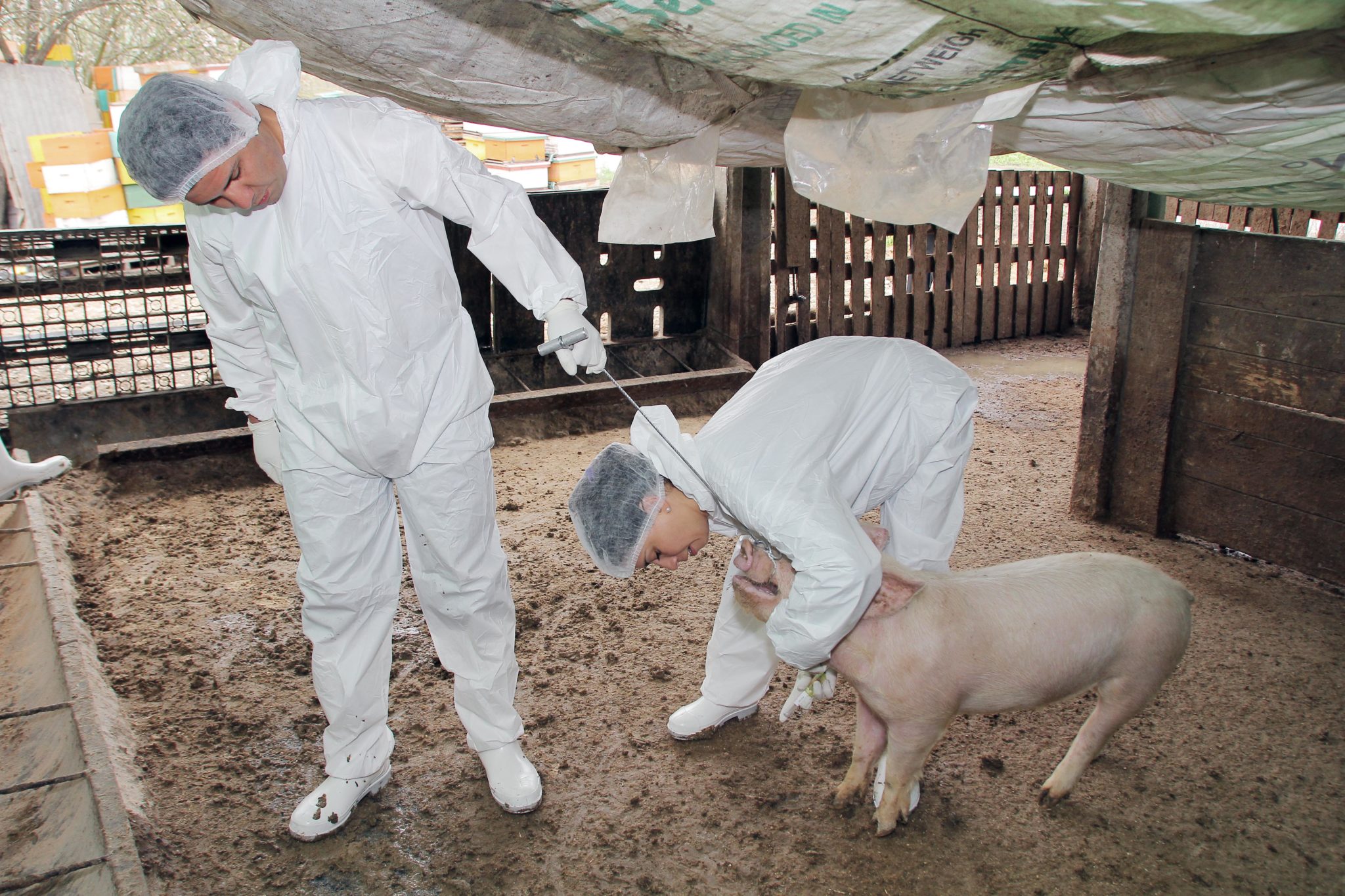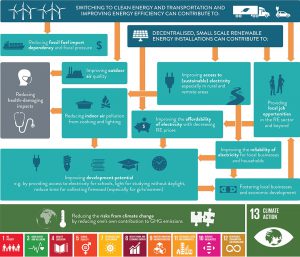In the Chinese lunar calendar, 2019 is the year of the pig. It’s supposed to be an auspicious year. For China’s pork industry, it’s anything but.
African Swine Fever (ASF) is decimating China’s pork industry, by far the biggest in the world. The country’s pig population could shrink by a third this year, up to 200 million animals, because of disease and culls.
While this means difficulties for China, it presents a trade opportunity for Latin America, as countries such as Argentina, Brazil and Chile prepare to increase or establish exports.
“We’ll be sending our first shipments in July and keep on closing new deals continuously. We have three companies authorised to export to China and we want that number to grow,” said Guillermo Proieto, head of Argenpork, a consortium of pork exporting firms in Argentina.
Yet, campaigners in Argentina are concerned about scaling-up production in an industry that has poor environmental standards and an unimpressive record on animal welfare.
Bleak picture
China produces and consumes two-thirds of the world’s pork. However, output is plunging as Beijing destroys herds and blocks shipments to stop ASF. Importers are filling the gap, with a 40 percent increase in both prices and imports expected this year.
1,000,000
pigs in China have died following an outbreak of African Swine Fever in August last year
The disease was first reported in August last year in China’s northeast. Since then, about one million pigs have died and the disease has spread to 31 of China’s 34 provinces, according to the UN’s Food and Agriculture Organization (FAO).
The virus, which is not communicable to humans, can be spread by live or dead pigs, and via pork products. Death can occur within a week of infection. There is no treatment or vaccine. The only way to stop the disease is to cull all affected or exposed swine.
If this happens, there will not be enough surplus pork in the world to meet the anticipated shortfall in production.
The increase in imports comes at the cost of numerous smaller and potentially more climate-friendly domestic pig farmers
Since 1970, per capita consumption of pork in China increased more than fourfold, from 25 grammes per day to over 100.
About half of all pigs in China are raised in small to medium scale pig farms, according to Wanqing Zhou, an associate at NGO Brighter Green.
These farms have long been the most challenging to regulate in terms of waste management, antibiotic use and animal welfare.
At between 2-3% imported pork is still fractional in China. The US was the main source, but has been replaced by European countries such as Germany and Spain in recent years.
Now, Latin America could play a larger role. But there will be consequences.
“The increase in imports comes at the cost of numerous smaller and potentially more climate-friendly domestic pig farmers, an issue that the [Chinese] government has been trying hard to resolve,” Zhou said.
In March, the Chinese government said it had a “good control” of the epidemic. At a press conference last month, Beijing said ASF was not spreading as quickly as before. According to the FAO, China’s central authorities have taken the correct steps to control the virus.
However, complications remain. China’s pig industry is fragmented and there are many small farms that may not have the correct security measures needed to control the spread of the disease. Furthermore, the virus can survive in pork products for months, meaning it can be reintroduced into herds by accident.
China: the main goal
For many Latin American pork-producing countries, the Chinese market has been a major ambition due to its size. For years, they have been working to either get clearance to start exporting or to expand the number of companies authorised to do so.
There are pending issues to solve such as lowering the use of antibiotics and a better management of effluents
The ASF crisis means that work to pay off, but it also presents a challenge. The same countries with export aspirations could see soy and corn shipments drop as China’ declining pig stocks require less food.
In Brazil, the soy industry expects US$2 billion in losses this year. But if pig farming can compensate, the result could be positive in terms of job creation as it generates more employment than soy.
Argentina could export up to three million tonnes less soy next year, according to a report by the Buenos Aires Grain Exchange. This would be partly offset by the more than 18,000 tonnes of pork it hopes to ship.
“Up to 70% of our current pork exports now go to Russia. We have productions levels comparable to leading countries but there are pending issues to solve such as lowering the use of antibiotics and a better management of effluents,” said Jorge Brunori, a pig expert at the Agriculture Technology Institute (INTA).
Though not exposed to diseases such as ASF, Argentina still has far from rational antibiotic use and does not consider animal welfare properly, according to Soledad Barruti, author of Malcomidos, an investigation into food production.
Upscaling production safely in order to export to China could prove challenging.
“Argentina is exporting low-quality pork that is subject to poor environmental standards,” Barruti said. “It’s cheap meat but it’s not contemplating the costs of all of us getting sick because of the toxic combination the pigs are exposed to.”
Over the past seven years, Argentina doubled its pork production from 280,000 to 565,000 tonnes due to growing domestic consumption. Now, however, exports play a bigger role, increasing 53% over the first four months of the year, according to the Agriculture ministry.
There are more than 100,000 pork farms in Argentina, most of which are located in the centre of the country. Despite their expansion, production is still insufficient to meet national demand and the country imports from Brazil.
“We have seen a large expansion over the last 15 years, but all focused on the domestic market. Now it’s the time to look at other countries and China was top of our list,” Proietto said.
Chile expands production
Chile is currently the fifth largest exporter of pork in the world. ChilePork, the national producers’ association has successfully deployed marketing strategies at trade fairs in Asia to boost recognition of their products.
534,000
Chile's current annual port production in tonnes, a near tenfold increase since =1984
Pork production in Chile has grown from 59,000 tonnes in 1984 to the 534,000 today. Pork is now the fourth most exported product in the country. Over 60% of production is exported. China, recipient of 73,000 tonnes last year, the principal destination.
“Producing countries like us could benefit from greater pork demand. But if the situation is more serious than what is being reported, there won’t be a sufficient supply to cover China’s demand. Prices of pork and other meats will be on the rise,” said Juan Carlos Domínguez, head of ChilePork.
Exports have also increased from Brazil. In May alone, exports were up 41% compared to 2018, from 47,700 tonnes to 67,200.
Luizinho Caron, a researcher at Embrapa, the Brazilian Agricultural Research Corporation, says greater demand means prices and profits are higher. However, producers know the hike is temporary and don’t want to invest to grow capacity.
With China’s doors open, many are adapting their plants to meet Chinese importers’ standards.
“Not all plants are ready to export,” Caron said. “This will possibly stimulate them to get the know-how.”








